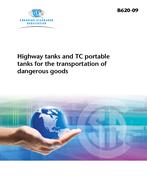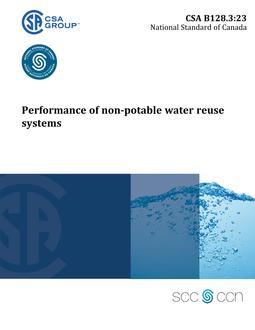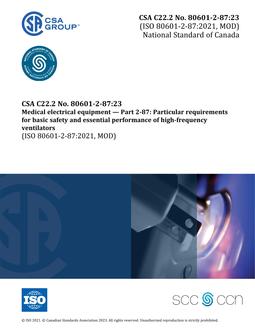
CSA B620-09
Click here to purchase
Preface
This is the fourth edition of CSA B620, Highway tanks and TC portable tanks for the transportation of dangerous goods. It supersedes the previous editions published in 2003, 1998, and 1987 under the title Highway Tanks and Portable Tanks for the Transportation of Dangerous Goods.
Scope
1.1
This Standard applies to tanks, other than intermediate bulk containers and tubes, used for the transportation of dangerous goods primarily by road. It considers the design, construction, certification, assembly, modification, repair, testing, inspection and periodic retesting, maintenance, and identification of such tanks. This Standard also applies to the hoses used to load or off-load dangerous goods.Additional design and construction requirements for tanks intended to carry specific products are provided in CSA B621, CSA B622, and CAN/CGSB-43.151.
1.2
The Transportation of Dangerous Goods (TDG) Act and the Transportation of Dangerous Goods Regulations can set out requirements that are additional to or different from those in this Standard due to particular characteristics or properties of individual dangerous goods. Where there is an inconsistency between the requirements of this Standard and those of the Act or Regulations, the Act or Regulations prevail to the extent of the inconsistency.
1.3
The use of this Standard does not reduce the necessity for competent engineering judgment or complete design calculations that take into account the intended use of the tank. The values of the various parameters in this Standard are the limiting values to which the tank is restricted. It is the responsibility of the tank manufacturer to ensure that the tank will safely carry out its intended function within these constraints.
1.4
In CSA Standards, “shall” is used to express a requirement, i.e., a provision that the user is obliged to satisfy in order to comply with the standard; “should” is used to express a recommendation or that which is advised but not required; “may” is used to express an option or that which is permissible within the limits of the standard; and “can” is used to express possibility or capability. Notes accompanying clauses do not include requirements or alternative requirements; the purpose of a note accompanying a clause is to separate from the text explanatory or informative material. Notes to tables and figures are considered part of the table or figure and may be written as requirements. Annexes are designated normative(mandatory) or informative (non-mandatory) to define their application.
1.5
The values given in SI (metric) units are the standard. The values given in parentheses are for information only. Units for pressure refer to gauge pressure unless otherwise noted.
Product Details
- Edition:
- 4th
- Published:
- 01/01/2009
- ISBN(s):
- 9781554367788
- Number of Pages:
- 172
- File Size:
- 1 file , 2.5 MB
- Product Code(s):
- 2419707, 2420633, 2019867


